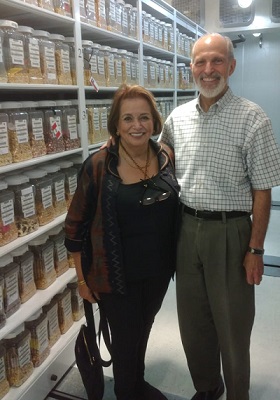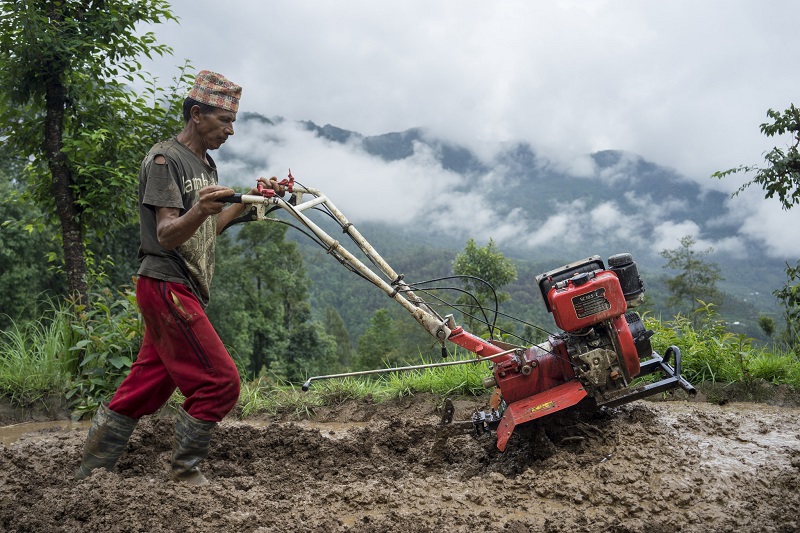
In the arena of international development, impact is the name of the game. Researchers, practitioners and funders initiate projects with the intention of benefitting poor and vulnerable people around the world. Despite these good intentions, very few manage to achieve large-scale impact. Larry Cooley, president emeritus and senior advisor at Management Systems International (MSI), is trying to change that.
Cooley is considered one of the top three scaling experts in the world. He recently presented at a workshop on scaling at the International Maize and Wheat Improvement Center’s (CIMMYT) headquarters in El Batán, Mexico.
“You just have to look around you to know that things change, but most changes are the effect of something else,” he said. “I’m interested in how you can make things better on purpose.”
There are many formal definitions of scaling, but Cooley described it as the attempt to overcome a gap between the need for something and the extent to which that need is being met.
“That’s great if you’re helping 10,000 people,” he said, “but if it’s 10,000 out of a billion, that’s not nearly as impressive.”
That’s not to say the intervention is invalid, but Cooley emphasized that if large-scale impact is the goal, interveners need to find a way to align the magnitude of the response with the magnitude of the problem. Doing this successfully requires a different way of thinking.
In recent decades, the international development community has fixated on technological innovations and short-term pilot projects. Many project leaders and donors assume a good product, idea or behavior will scale on its own, but Cooley says scaling has more to do with the underlying political, cultural or other systems than the actual innovation.
During the workshop, Cooley presented the Non-pneumatic Anti-shock Garment (NASG) as an example. NASG is a first-aid device that can save a woman’s life when hemorrhaging from childbirth. Cooley saw this device in action several years ago in Africa.
“The lady looked dead. They put this garment on her, and a few minutes later, she was drinking from a cup,” said Cooley. “It was the closest I’ve come to a miracle in my life.”
When Cooley was presented with the challenge of scaling-up NASG in Nigeria, he thought it would be relatively easy. NASG is inexpensive and easy to use; the project had a willing donor and no competitors. But Cooley said he and his team quickly ran into complications.
Even though NASG can prevent hemorrhaging women from bleeding to death, they still need emergency medical treatment within 48 to 72 hours. Figuring out how to transport women to emergency care facilities, deciding who pays for the service, and creating a distribution network for the garments are just some of the logistical hurdles that have nothing to do with the actual innovation and everything to do with the system. Cooley says this is where governments and markets play a vital role.

“The trick is to find a leverage point where the incentives will continue to push people to do the right thing,” said Cooley. “I’m not trying to malign people’s motives on this, but change is hard.”
Cooley said often the biggest obstacle to scaling is not opposition. It is the status quo and doubt.
“It’s much easier to keep doing what you’re doing until somebody creates a really compelling set of incentives to move,” he said. “If there’s a little uncertainty, they won’t move and inertia will win.”
A non-governmental organization or project leader does not have to do this alone. Often a third party with connections to the government or markets may need to intervene. Cooley said this backstory is rarely reported in the media or in the development sector. From smartphones to the Green Revolution, the story of innovation with large-scale impact tends to follow this narrative: we started small, we developed it and now it’s making an impact.
“What usually gets lost are the political and organizational details,” said Cooley. “How did you buy off the opposition? Who were the principal spokespeople and how did you get them to be spokespeople?”
The international development sector is beginning to recognize that a scaling perspective is needed to achieve large-scale impact. According to Cooley, interveners need to design for scale at the beginning of a project; they need to establish the pre-conditions for scale, and manage the scaling-up process. Not every project leader needs to be an expert in scaling, but working with people who are experts can significantly boost a project’s potential impact.
As part of a German Development Cooperation effort to aid the scaling up of agricultural innovations, Lennart Woltering joined CIMMYT’s sustainable intensification program last year. Woltering helps link CIMMYT’s research to specific development needs, increasing its relevance and impact.
“There is great momentum at CIMMYT to give more consistency to the term scaling,” said Woltering.
Woltering organized the workshop on scaling and invited Cooley to present at CIMMYT headquarters.
“I am a big fan of Larry Cooley,” said Woltering. “He approaches scaling from a management perspective – how to get things done.”


